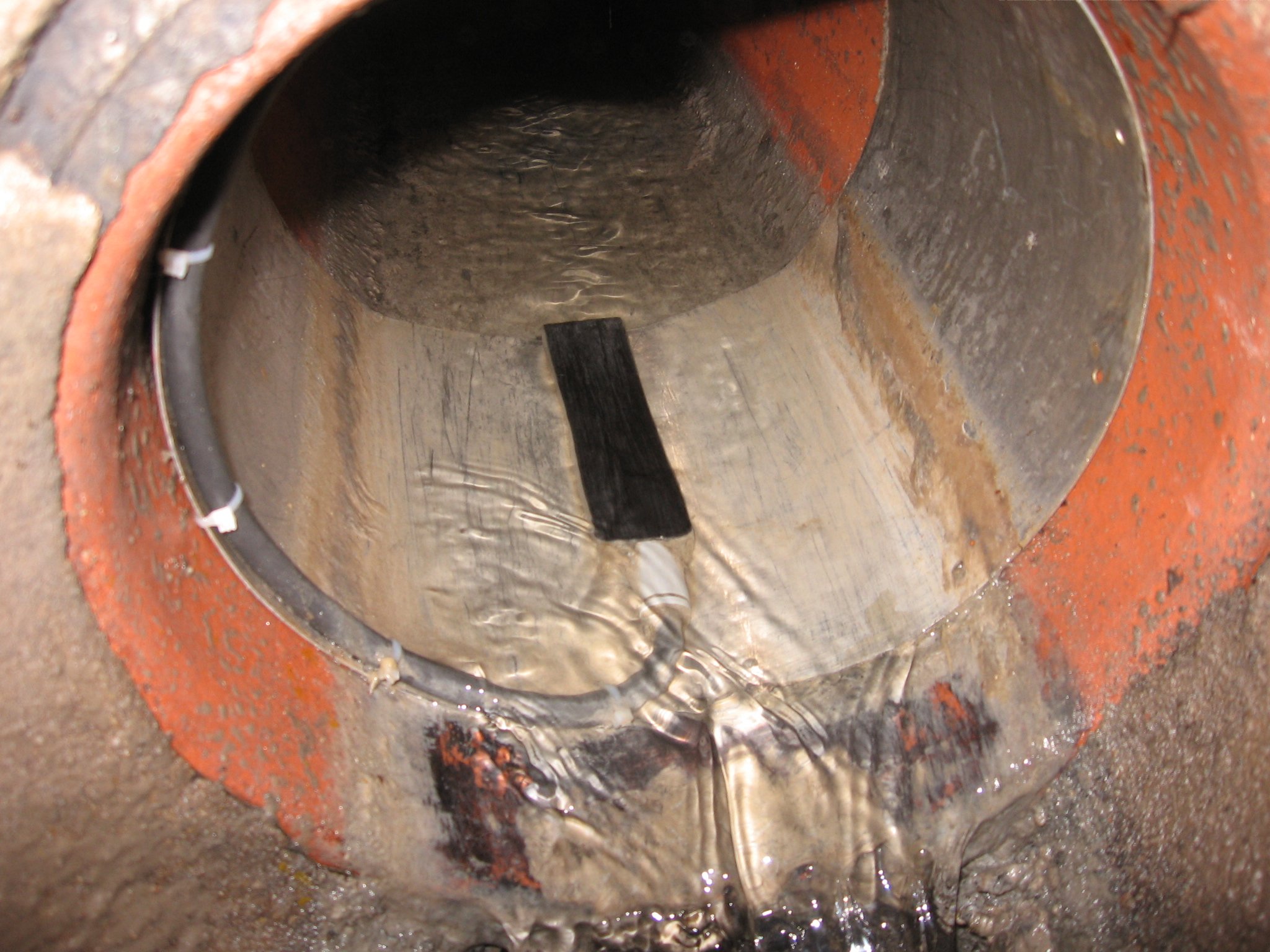The Significance of Study Duration in Sewer Flow Monitoring Programs
In the world of sanitary sewer flow monitoring and hydraulic modeling, there is a common belief that the best way to initiate a drought is to plan for and install flow meters in the sanitary sewer system. While this may be true sometimes, it’s also true that some sewer flow monitoring projects suffer from insufficient dry-weather data needed to calculate wastewater production and base infiltration for the subject sewershed. Agencies that aim to capture wet weather and rainfall-dependent infiltration and inflow (RDII) events often schedule sewer flow monitoring studies for the project area's historical “wet” period. Unfortunately, this strategy can backfire if the season is wetter than normal and there are no dry days during the study duration.
The optimal duration of a sewer flow monitoring study depends on the specific goals and objectives of the monitoring program and the characteristics of the system being studied.
In this blog article, we embark on a journey to unravel the significance of study duration in sewer flow monitoring, exploring how the time over which data is collected influences the accuracy, reliability, and depth of insights derived from these programs.
The variables within a sanitary sewer system are multifaceted, from the seasonal ebb and flow to the nuances of rainfall-dependent impacts. As we dive into the depths of sewer flow monitoring, we’ll navigate the considerations that guide the determination of study duration, shedding light on key factors that shape the planning and execution of these essential programs.
Primary Reasons for Sewer Flow Monitoring Studies
Agencies conduct sewer flow monitoring studies for various reasons, each driven by the need to optimize, manage, and improve the performance of the sanitary sewer system. Some of the primary reasons for an agency to undertake a study include:
Infrastructure Asset Management - Agencies often perform sewer flow monitoring to assess the condition and performance of their sewer infrastructure. By understanding flow rates and patterns, infrastructure conditions, and performance, agencies can strategically plan the maintenance and rehabilitation of sewer system assets. Wastewater flow information guides informed decision-making on where to invest in maintenance, repair, or upgrades to enhance the sewer system's overall efficiency and long-term reliability. Oftentimes, an agency will perform sewer flow monitoring pre- and post-sewer rehabilitation to evaluate the effectiveness of improvement projects.
Hydraulic Modeling - Hydraulic modeling is critical for designing, analyzing, and optimizing sewer systems. Sewer flow monitoring is used to collect data for calibrating hydraulic models. Accurate models help predict system behavior under different conditions and guide infrastructure planning.
Capacity Planning - Monitoring sewer flows provides valuable data for capacity planning. Agencies can assess whether existing systems can handle current and future demands, especially in growing urban areas. This helps to prevent overflows, backups, and other capacity-related issues.
RDII Analysis - Rainfall-dependent infiltration and inflow analysis focuses on understanding the impact of rainfall on a sewer system. Sewer flow monitoring is performed to analyze the occurrence and magnitude of RDII events, helping to identify sources of inflow and infiltration and mitigate their impacts.
Compliance or Discharge Monitoring - Regulatory agencies often impose standards and requirements for wastewater discharges. Agencies conduct sewer flow monitoring to ensure compliance with environmental regulations, which includes monitoring parameters such as flow rates, pollutant levels, and other water quality indicators. Sewer flow monitoring is also used for billing purposes in areas where communities send their wastewater flow to a regional treatment facility and are charged based on the flow volume.
Emergency Response Planning - Monitoring studies provide real-time data on sewer system conditions. In a blockage, overflow, or other emergency, agencies can use the data from monitoring studies to respond quickly and effectively.
V&A’s Sewer Flow Monitoring field team installs a flow meter in a wastewater manhole. Installing a flow meter requires collecting key information, such as pipe material, pipe diameter, and meter clock position in pipe. Our field team calibrates each meter and confirms that data is being collected and recorded. Depending on study duration, our field team performs site maintenance visits periodically during the study to ensure comprehensive and quality data is collected.
Study Duration Matters
As agencies and engineering teams increasingly recognize the importance of data-driven decision-making, the duration of sewer flow monitoring programs emerges as a pivotal factor in extracting meaningful information. Continue reading to explore why the clock matters in sewer flow monitoring and how the duration of these studies holds the key to unlocking a wealth of insights on sanitary sewer systems.
Understanding Seasonal Variations
Sewer systems, like living organisms, exhibit distinct behaviors during different seasons. The duration of a sewer flow monitoring program plays a crucial role in capturing these seasonal variations. From the increased demand during peak water usage in summer to challenges posed by heavy rainfall in winter, a comprehensive study duration allows us to discern patterns that might be overlooked in shorter-term observations. Generally, a four- to six-month study duration under average or “normal” year conditions should provide flow characteristics for a range of dry- and wet-weather scenarios to support both hydraulic model calibrations and rainfall-dependent infiltration and inflow analysis.
Hydraulic Modeling
In hydraulic modeling, the importance of study duration cannot be overstated. Longer monitoring periods provide the necessary data points for accurate model calibration, and typically, an experienced hydraulic modeler will want at least a full hydrologic year of data. This calibration, adjusting model parameters to align with observed data, ensures that model simulations mirror the real-world operation of sewer systems. A sufficiently long study duration will allow modelers to accurately determine average, peak, and minimum sewer flows – all critical to hydraulic modeling. Whether assessing flow rates or predicting system responses to various scenarios, the duration of the study directly influences the reliability of system models.
Rainfall-Dependent Infiltration and Inflow (RDII) Analysis
Rainfall events can significantly impact sewer flows through infiltration and inflow. To accurately calculate and predict RDII, a monitoring program must extend over multiple rain events, capturing the nuances of how the system responds to different intensities and event durations. By analyzing hydrographs and studying the patterns during rain events, we gain a deeper understanding of how rainfall influences the dynamics of sewer flows. If possible, RDII studies should begin at the end of the normal “dry” period and extend into the normal “wet” period. With this timing strategy, the study will capture the dry data needed to calculate base infiltration and to help determine the effectiveness of RDII mitigation efforts.
Compliance Monitoring and Long-Term Trends
Extended study duration is essential for compliance monitoring with environmental regulations and tracking long-term trends in sewer system performance. Regulatory compliance often requires consistent adherence to standards over time, and longer monitoring periods ensure a comprehensive evaluation of the sewer system’s ability to meet these requirements. In general, regulatory agencies may require a compliance monitoring period of at least one year, if not longer, to ensure operational goals and objectives are met.
Data Quality and Informed Decision-Making
Quality data forms the backbone of informed decision-making. While longer study durations contribute to more robust datasets, the challenge lies in striking a balance. Flow monitoring experts understand how the desired level of data quality influences the duration of monitoring programs, ensuring that the information collected is extensive and practical for making impactful decisions regarding infrastructure maintenance, rehabilitation, and planning. Sewer flow monitoring programs should include flexibility to shorten or extend the monitoring duration depending on the quantity and quality of data collected.
In Summary
Understanding the specific details of the sewer system and analysis goals helps to determine the optimal duration for sewer flow monitoring studies. In many cases, a monitoring duration of several months to even a few years (budget permitting) may be necessary to capture a representative range of flow conditions and system responses. The duration of these studies is the key that unlocks a comprehensive understanding of sewer system dynamics, enabling agencies to make informed decisions for optimization, maintenance, and future infrastructure planning. From capturing seasonal variations and conducting accurate hydraulic modeling to unraveling the complexities of RDII, the clock plays a critical role in extracting meaningful insights. As agencies navigate the currents of data-driven decision-making, it becomes evident that a well-planned and sufficiently long monitoring duration is not just a matter of convenience but an essential investment in the resilience, efficiency, and sustainability of sanitary sewer system infrastructure. In the context of sewer flow monitoring, time is the linchpin that empowers agencies to understand their systems and ensure the seamless flow of wastewater through the system.
Don’t hesitate to contact us to discuss sanitary sewer flow monitoring with an expert. We can answer any questions and help recommend the most cost-effective and meaningful way to gather critical data that may identify potential sewer system issues and help guide infrastructure improvement planning.


